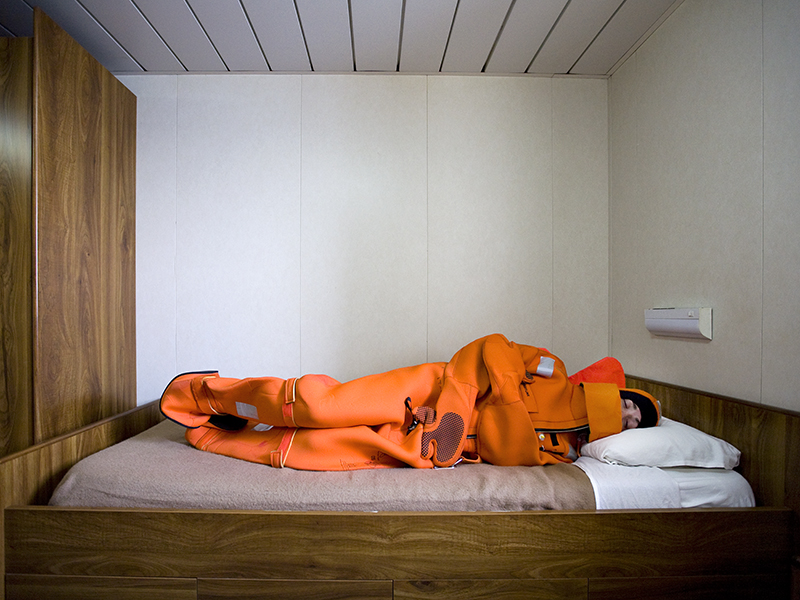
16 December 2017 – 3 February 2018
Museolaboratorio Ex Manifattura Tabacchi
Opening: Saturday 16 December 2017 – 7pm
artist
Daniela d’Arielli
curated by
Enzo De Leonibus
opening times:
From Wednesday to Sunday
6pm — 9pm.
As I reread the text Daniela d’Arielli sent me, I felt it my ethical duty to leave it as is, as a profound gift of the Artist.
Amare, the Italian word for love, is pronounced [aˈmaː.re]
A mare, also means “to be at sea”
The chemistry of the sea intertwines all the works I present here: two paintings taken from an underwater photo and twenty prints made using the salt paper technique, which consists of dipping a sheet in a solution of sodium chloride and then in one of silver nitrate. By reacting, these two substances produce silver chloride, an unstable substance in the light.
Instead of sodium chloride I have used sea water (which I collected in Acquabella, a place on the Abruzzo coast near Ortona, my family’s place of origin), my sweat and my tears; all salt solutions.
The sea is similar to the sweat of the body; and on my body I placed the paper to print.
So water meets the materiality of body and fatigue; as in cargo ships.
The sea merges with sweat as labor with money (which in paper form is also called “liquid”): this is why the briquettes that support the photographs are made from shredded banknotes. Banknotes as green as the water of Conakry in New Guinea, where the photos were taken.
On this element, liquid and oneiric, the porthole acts as a passe-partout, by delimiting the image makes it possible to preserve it. So framed, you carry the photos of your loved ones with you, enclosed in a pendant. My pendant is made from mytilus galloprovincialis; it contains a small photo I printed using my tears. The Mediterranean mussel is both fruit of the sea and its purifier. The pendant has the shape of a drop and has a small mirror inside.
These images come from the trip I made in 2013 to Rio de Janeiro; I had been invited by the Graphos gallery:Brasil and its curator, Ricardo Luiz Duarte De Suouza, who accepted my proposal to travel to Rio by ship and to consider the time spent at sea as part of the residency.
The only woman in a crew of twenty-six people and two other passengers, I left from Le Havre on board the cargo ship Grande San Paolo and after eighteen days at sea I landed in Rio de Janeiro. Traveling on a cargo ship is about loss of control, a resistance test. Time expands and space condenses into a clearly defined present, which was not yesterday and will not be tomorrow. This condition of total openness allows you to dive into an altered, perturbing and unconscious dimension.
A dimension of light and shadow, mystery and discovery, memory and dream.
Beyond the porthole of my cabin, the marine landscape; alien to every border, fixed yet ever-changing. Every morning at the same time, from the inside of my cabin, I would photograph that porthole. Months later, after my return from Brazil, I accidentally found a black-and-white photo taken and developed by my father during one of his long periods at sea. It is the photo of a porthole. Outside, the sea and the deck of a huge merchant ship.
It took me almost a year to organize this trip. I do not know whether it could be more difficult today because of new international marine laws and the complicated historical, political and cultural period we are going through. Never had I been on a cargo let alone a long trip at sea.
The sea is part of me, of my origins. I would see it as soon as I woke up, I would listen to it before falling asleep.
It was a line on the horizon to be contemplated, not something I had ever crossed.
